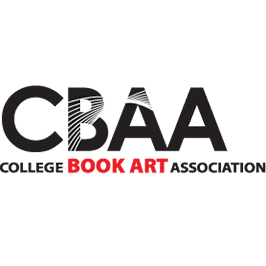“I’m looking for books about mirages,” said one researcher.
“I’m looking for a book with wooden covers that slam shut on the reader,” said another.
These are examples of research requests I field on a daily basis in reference to the book arts collection I work with. I love these types of requests because they provide opportunity for me to seek and find new pieces of work that I wouldn’t necessarily come across otherwise. Additionally, these types of requests are relatively easy for me to search in the library catalog and database (or, even with online search engines) because often artists’ books are cataloged with terms focusing on content or structure. I’ve noticed the questions above exemplify two trends in the way people typically request materials in book arts collections: They either choose to focus on topical content or they choose to focus on physical structure. Considering the way books are more typically conceived of as textual information carriers, it’s not surprising that most researchers either use the tools of topic and genre or physical structure, but not both, to search.
It is my greatest hope, and even assumption, that whichever tool is used to search, the book art piece delivered to the researcher illuminates some relationship between topic and structure. This relationship, though, is more intangible and decidedly more difficult to search for and connect researchers to. In general, the textual and paratextual elements of book art participate equally in the understanding of the whole. Book artists, I think, come to creating work with either an innate or learned sense of looking at the whole. Through exposure to other artists’ work and critical dialogue amongst practitioners, it’s hard to ignore the decisions made and elements present which come together to make a whole. I tend to make the assumption that researchers outside the field of book arts make the connection between the text, image, and physical composition naturally, but I’m not sure if this is the case, nor am I sure where the responsibility of understanding falls.
Artists’ statements introducing specific books are tools that I have found invaluable as a librarian assisting people in finding book art. As an artist, I am guilty of pushing work off into the world without an accompanying statement. This is partially because I believe the work should be able to convey all meaning and understanding without the aid of a statement, but it’s also partially and frankly because I don’t enjoy writing statements. They, though, do provide the reader something to pull and push against and they often, sometimes in conjunction with a colophon, provide conceptual context in relationship to the physical means of making. In the most practical sense, they also provide readily available terms and phrases by which the item can be cataloged and consequently searched.
Curiously, I didn’t start writing this post with the intention of shining a light on what an artist says about a work, but I’ve now convinced myself that they are integral to building understanding and research around the art we make. Within the field, I think artists’ statements are generally encouraged, but I’m curious how people perceive their use by future readers and how their perceived use shapes what is provided in a statement.
Andrea Kohashi is a book artist and librarian residing in Richmond, Virginia. She is the Teaching and Learning Librarian at Virginia Commonwealth University’s Special Collections and Archives. Kohashi received her MFA in Book Arts and MA in Library and Information Science from the University of Iowa.

